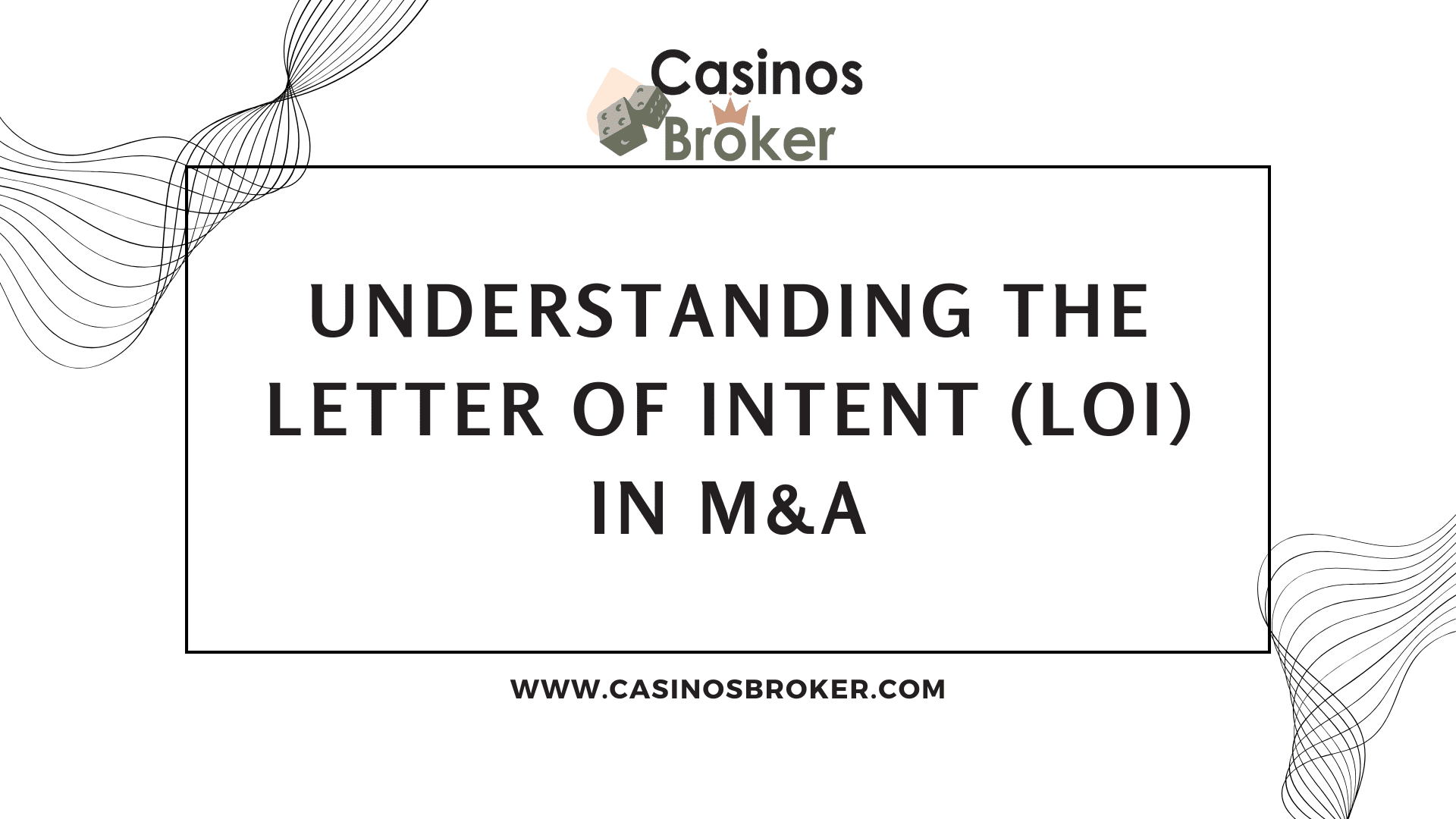Основные характеристики письма о намерениях
Письмо о намерениях (LOI) — это важнейший документ в слияниях и поглощениях (M&A), выступающий в качестве дорожной карты сделки. Хотя в большинстве аспектов оно не имеет обязательной силы, оно содержит положения, которые могут существенно повлиять на ход переговоров.
1. Необязательный характер
Большинство писем о намерениях не имеют обязательной юридической силы, то есть они не обязывают стороны к заключению сделки. Однако ключевые положения, такие как эксклюзивность, конфиденциальность и запрет на наемную работу, часто имеют обязательную юридическую силу.
2. Моральное обязательство
Хотя письмо о намерениях не имеет юридической силы, оно создает моральное обязательство между сторонами. Некоторые покупатели могут использовать это для того, чтобы впоследствии договориться о более выгодных условиях.
3. Предварительное соглашение
Письмо о намерениях служит предварительным этапом перед заключением окончательного договора купли-продажи, позволяя обеим сторонам начать комплексную проверку и избежать затрат на преждевременное составление полного договора.
4. Рамки переговоров
В письме о намерениях излагаются основные условия сделки. Любые неопределенные условия в письме о намерениях, скорее всего, будут сформулированы в пользу покупателя при составлении договора купли-продажи.
5. Пункт об эксклюзивности
В большинстве писем о намерениях предусмотрен период эксклюзивности, который не позволяет продавцу вступать в контакт с другими потенциальными покупателями. Хотя это и помогает покупателям, это ослабляет переговорные позиции продавца.
6. Ограничение на предоставление информации и проведение комплексной проверки
Как правило, покупатели располагают минимальной информацией до подписания письма о намерениях. Проверка благонадежности может выявить проблемы, которые приведут к пересмотру условий или отказу от сделки.
7. Импульс в переговорах
Подписание письма о намерениях придает сделке импульс, позволяя сторонам выявить и решить потенциальные проблемы до того, как будут вложены значительные время и ресурсы.
Типичные проблемы и решения, возникающие при подаче писем о намерениях
| Проблема | Решение |
|---|---|
| После подписания письма о намерениях условия зачастую становятся менее выгодными. | Определите ключевые термины заранее, чтобы сохранить рычаги влияния. |
| Неопределенные условия выгодны покупателю. | Обеспечьте ясность всех основных условий сделки в письме о намерениях. |
| Длительные периоды эксклюзивности ослабляют позиции продавца. | Ограничьте срок действия эксклюзивных прав и установите поэтапные требования. |
| Письмо о намерениях снижает рычаги влияния продавца. | Не торопитесь с обсуждением условий письма о намерениях, а после его подписания действуйте быстро. |
| Выявленные в ходе комплексной проверки проблемы влияют на цену и условия сделки. | Подготовьте полный комплект документов. |
Обязывающие и необязывающие положения
Большинство писем о намерениях имеют необязательную юридическую силу, за исключением некоторых важных положений:
Обязывающие положения:
- Эксклюзивность
- Конфиденциальность
- Доступ покупателя к информации для проведения комплексной проверки
- Залог в виде залога (если применимо)
- Распределение расходов
Необязательные положения:
- Цена покупки и условия оплаты
- Распределение активов и обязательств
- Структура сделки (продажа активов или продажа акций)
- Постоянная роль продавца и его вознаграждение
Хотя суды, как правило, признают необязывающий характер писем о намерениях, они могут принудительно исполнять определенные обязательства, если стороны продемонстрируют намерение быть связанными ими или если переговоры ведутся недобросовестно.

Ключевые элементы письма о намерениях
1. Идентификация сторон
В начале письма о намерениях следует четко определить стороны, участвующие в сделке. Это включает в себя полные юридические наименования покупателя и продавца, а также соответствующие данные о компаниях, такие как регистрационные номера, адреса и контактная информация. Четкость на этом этапе предотвращает любые недоразумения относительно организаций, участвующих в сделке.
2. Описание сделки
В письме о намерениях необходимо указать характер сделки. В случае бизнеса в сфере онлайн-игр это может включать продажу всей платформы онлайн-казино, партнерского веб-сайта, программного обеспечения или других цифровых активов. В описании также следует уточнить, является ли сделка приобретением активов (когда передаются конкретные активы) или приобретением акций (когда передается право собственности на всю компанию).
3. Цена покупки и структура платежей
Одним из наиболее важных разделов письма о намерениях является цена покупки и порядок ее оплаты. В документе следует указать:
- Общая стоимость покупки или оценочная стоимость бизнеса .
- Условия оплаты, такие как единовременные платежи, платежи в рассрочку или выплаты в зависимости от будущих результатов деятельности.
- Будет ли оплата произведена наличными, акциями, криптовалютой или их комбинацией.
- Любые условия, которые могут повлиять на окончательную цену покупки, такие как показатели эффективности или корректировки после закрытия сделки.
4. Процесс комплексной проверки
Комплексная проверка является неотъемлемой частью любой сделки по слиянию и поглощению, позволяя покупателю тщательно изучить бизнес до завершения сделки. В письме о намерениях следует указать:
- Объем комплексной проверки, включая финансовые, юридические, технические и операционные аспекты.
- Сроки завершения комплексной проверки.
- Тип информации, которую продавец обязан предоставить, например, финансовую отчетность, данные о трафике (для онлайн-бизнесов), базы данных клиентов и документы, подтверждающие соответствие нормативным требованиям.
- Любой доступ, который покупатель будет иметь к сотрудникам компании, ключевым заинтересованным сторонам и сторонним поставщикам.
5. Конфиденциальность и эксклюзивность
Для защиты конфиденциальной деловой информации в письмах о намерениях часто содержатся пункты о конфиденциальности, запрещающие любой из сторон разглашать подробности переговоров или обсуждаемого бизнеса. Кроме того, может быть включен пункт об эксклюзивности (также известный как пункт о запрете на поиск других покупателей), запрещающий продавцу вести переговоры с другими потенциальными покупателями в течение определенного периода времени.
6. Условия закрытия
Условия закрытия сделки определяют предварительные условия, которые должны быть выполнены до завершения сделки. К ним могут относиться:
- Получение разрешений от регулирующих органов (например, лицензий на игорный бизнес для онлайн-игр).
- Завершение комплексной проверки к удовлетворению покупателя.
- Отсутствие существенных неблагоприятных изменений в бизнесе.
- Соглашение о трудовых договорах или сохранении ключевого персонала.
7. Переходные и послезаключительные обязательства
Для обеспечения непрерывности бизнеса в письме о намерениях следует указать все обязательства, которые будут приняты после закрытия сделки. Это может включать в себя:
- Помощь продавца в переходный период, например, обучение или оперативная поддержка в течение определенного периода.
- Соглашения о неконкуренции и запрете переманивания сотрудников призваны предотвратить прямую конкуренцию продавца с покупателем или переманивание сотрудников после продажи.
- Стратегии удержания сотрудников и вопрос о том, останутся ли ключевые сотрудники в компании при новом владельце.
8. Обязательные и необязательные положения
Большинство писем о намерениях не имеют обязательной юридической силы, то есть служат лишь рамочным соглашением, а не юридически обязывающим договором. Однако некоторые положения могут иметь обязательную юридическую силу, например:
- Пункты о конфиденциальности.
- Эксклюзивные соглашения.
- Распределение расходов (кто оплачивает юридические услуги и проверку юридической чистоты сделки).
- Применимое право и юрисдикция в случае споров.
9. Хронология и дальнейшие шаги
Наконец, в письме о намерениях должен быть указан график дальнейшего продвижения сделки, включая ключевые сроки подписания окончательных соглашений, завершения комплексной проверки и закрытия сделки. Это гарантирует, что обе стороны сохранят согласованность действий и приверженность продвижению к заключению окончательной сделки.
Заключение
Хорошо структурированное письмо о намерениях (LOI) имеет важное значение в любой сделке по слиянию и поглощению, особенно в индустрии iGaming , где сложности в нормативно-правовом и операционном отношении могут повлиять на ход сделок. Четко определяя ключевые условия, ожидания и положения, LOI помогает предотвратить недоразумения и создает основу для успешного приобретения. Хотя в большинстве случаев оно не имеет юридической силы, LOI обеспечивает как покупателям, так и продавцам уверенность и четкий план переговоров, в конечном итоге способствуя более плавному процессу сделки.
Часто задаваемые вопросы
1. Какова основная цель письма о намерениях (LOI) в сделках слияния и поглощения?
Письмо о намерениях (LOI) служит своего рода дорожной картой и предварительным соглашением для слияния или поглощения. Его основная цель — определить основные условия сделки, такие как цена покупки и структура платежей, до того, как стороны вложат значительное время и средства в составление полного договора купли-продажи. Оно позволяет как покупателю, так и продавцу нарастить «импульс сделки» и создает моральное, хотя зачастую и не полностью юридическое, обязательство продолжить сделку.
2. Имеет ли письмо о намерениях юридическую силу?
Как правило, письмо о намерениях не имеет обязательной юридической силы , то есть стороны не обязаны завершать сделку. Однако в статье подчеркивается, что отдельные положения документа имеют юридическую силу.
-
Необязывающие положения: цена покупки, структура сделки и условия оплаты.
-
Обязывающие условия: периоды эксклюзивности (пункты о запрете поиска альтернативных поставщиков), соглашения о конфиденциальности и распределение расходов.
3. Какие ключевые элементы следует включить в письмо о намерениях?
Чтобы избежать недоразумений, хорошо структурированное письмо о намерениях должно включать девять конкретных элементов:
-
Идентификация сторон: полные юридические наименования и данные.
-
Описание сделки: Продажа активов против покупки акций.
-
Цена и оплата: оценка стоимости, дополнительные выплаты в зависимости от результатов деятельности и методы оплаты (наличные/акции).
-
Объем комплексной проверки: сроки и доступ к документам.
-
Конфиденциальность и эксклюзивность: защита данных и периоды, когда покупка невозможна.
-
Условия закрытия сделки: получение разрешений регулирующих органов и завершение комплексной проверки.
-
Обязательства после закрытия сделки: соглашения о неконкуренции и обучение.
-
Обязывающие положения: Четкое разграничение положений, подлежащих исполнению.
-
График: Сроки заключения окончательного соглашения.
4. Какие типичные риски возникают у продавцов при подписании письма о намерениях?
Наибольший риск для продавцов представляет собой пункт об эксклюзивности . Согласившись не вести переговоры с другими покупателями в течение определенного периода, продавец теряет рычаги влияния. Если сделка затягивается, покупатель может попытаться пересмотреть условия (это часто называют «пересмотром условий»). Кроме того, если основные условия сделки остаются неопределенными в письме о намерениях, они часто структурируются в пользу покупателя при окончательном составлении контракта.
5. В чем разница между письмом о намерениях (LOI) и договором купли-продажи?
Письмо о намерениях (LOI) — это предварительный документ , используемый для подготовки к комплексной проверке и переговорам. Как правило, он короткий и фокусируется на основных условиях. В отличие от него, договор купли-продажи — это окончательный, юридически обязывающий контракт, в котором подробно описываются все аспекты сделки, включая гарантии, заверения и точные юридические обязательства, и составляется он только после успешного завершения комплексной проверки.





